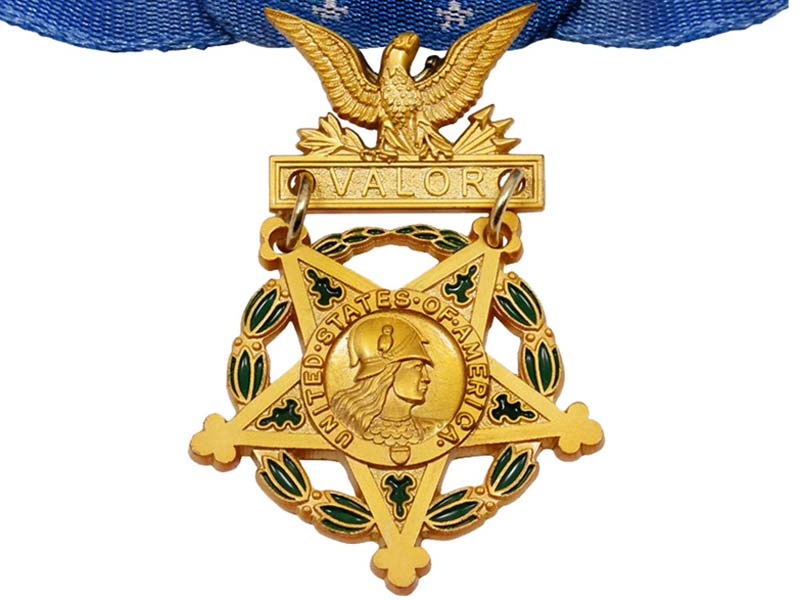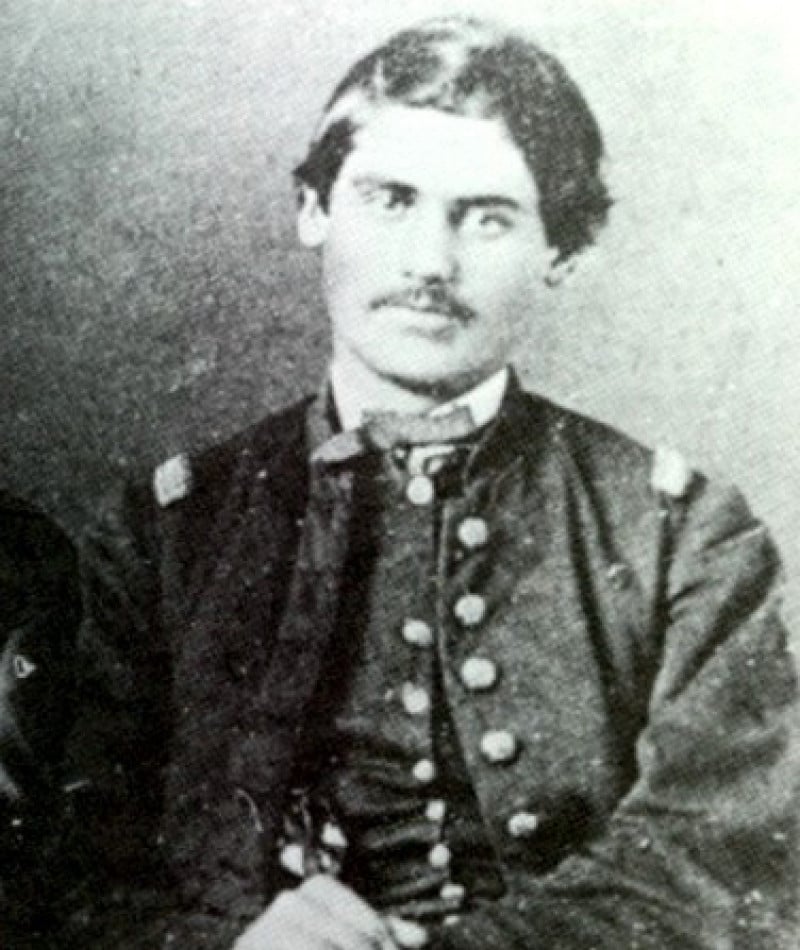Twenty-five years ago, the United States Congress established March 25 as “National Medal of Honor Day” to “foster public appreciation and recognition of Medal of Honor Recipients.” The date was chosen because it was on March 25, 1863, that the very first Medals of Honor were presented to six members of Andrews’ Raiders during the American Civil War.
To date, just 3,536 Medals of Honor have been awarded to 3,517 recipients, with only 63 recipients still living.
History of America’s Highest Military Honor
The Medal of Honor is the United States Military’s highest decoration, and its origins date to the American Civil War, when Iowa Senator James W. Crimes introduced a bill to “promote the efficiency of the Navy” by authorizing the production and distribution of “medals of honor.” Within months, a similar bill was introduced for an award for privates of the U.S. Army. The wording and nature of the bills changed, including that the award would be for soldiers of all services and all ranks.

On July 12, 1862, President Abraham Lincoln signed into law the authorization of the Medal of Honor.
As it was the only U.S. military award for valor during the conflict of Brother vs. Brother, a total of 1,527 medals were awarded. With the introduction of other medals and awards in the latter half of the 19th century, by the Spanish-American War, the Medal of Honor became the supreme honor. It has been awarded to Soldiers, Sailors, Airmen, Marines, and Coast Guardsmen.
The Medal of Honor’s design has evolved since first introduced in 1862, yet, out of respect for those who have earned it, its appearance has remained largely unaltered for more than 150 years. The basic medal is a gold star surrounded by a wreath, topped by an eagle on a bar with the word “Valor” inscribed. The gold star is attached to a ribbon with 13 stars on a light blue field, the same color as the neckband.

Today the Medal of Honor, along with the Legion of Merit, are the only two neck order awards issued by the United States Armed Forces – and it is the only neck order issued to members of the U.S. Armed Forces. All members of all branches of the U.S. military are eligible to receive the honor, and each service has its unique design – except for the USMC and United States Coast Guard, which each use the U.S. Navy’s version of the award. It is unclear if the United States Space Force – the sixth and newest branch of the U.S. military – will adopt its own Medal of Honor or use the same one as the United States Air Force.
Awarding the Medal of Honor
It is often stated that someone is a “Medal of Honor winner,” but the truth is that it is earned for actions that truly go above and beyond the call of duty.

The Medal of Honor is authorized for any military service member who “distinguishes himself conspicuously by gallantry and intrepidity at the risk of his life above and beyond the call of duty.” This includes while engaged in an action against an enemy of the United States; while engaged in military operations involving conflict with an opposing foreign force; or while serving with friendly foreign forces engaged in an armed conflict against an opposing armed force in which the United States is not a belligerent party.
All recommendations require a thorough report on the act itself, the battlefield, and its setting. In addition, at least two sworn eyewitness statements, along with any other compelling evidence that can be gathered, must be provided. Recommendation packets must be approved all the way up the military command structure, ending with the United States President as the Commander-in-Chief.
Notable Medal of Honor Recipients
The very first recipient of the Medal of Honor was Private Jacob Parrott of Company K, 33D Ohio Infantry, who was one of 22 men – later known as “Andrew’s Raiders” – who penetrated nearly 200 miles south into enemy territory and captured a railroad train at Big Shanty, Georgia, in an attempt to destroy the bridges and track between Chattanooga and Atlanta. Captured and severely tortured, Parrott was later part of a prisoner exchange. After being awarded the Medal of Honor, he served in the Union Army for the remainder of the war, earning a commission and rising to the rank of First Lieutenant.

Dr. Mary Edward Walker, an abolitionist and Civil War surgeon, was captured by Confederate forces after crossing enemy lines to treat wounded civilians. Arrested as a spy, she remained a prisoner of war until she was released in a prisoner exchange. After the war, she became a Medal of Honor recipient for her efforts to treat the wounded in battle across enemy lines. She remains the only woman, and just one of eight civilians, to have received the Medal of Honor.

A total of 19 service members have been awarded the Medal of Honor twice, and the first double Medal of Honor recipient was Thomas Custer – brother of George Armstrong Custer – for two separate actions that took place several days apart during the American Civil War.
William “Willie” Johnston remains the youngest recipient, who at the age of 13 served as a drummer boy in Company D of the 3rd Vermont Infantry during the American Civil War. His division was routed during the Seven Days Battles in the summer of 1862, and Johnston was the only drummer to return with his instrument – a fact that was noteworthy as many soldiers threw away their guns and equipment during their retreat.

Notable Medal of Honor Facts:
- Enlisted recipients of the Medal of Honor are entitled to a supplemental uniform allowance.
- Children of recipients are eligible for admission to the United States military academies without regard to the quota requirements.
- It is a federal felony to falsely claim to be a Medal of Honor winner. Under the Stolen Valor Act, it is also against the law to sell or buy a Medal of Honor.
- The Medal of Honor has been presented nine times where the circumstances are “unknown” or “classified.”
- The term “Congressional Medal of Honor” is incorrect. The Medal of Honor is presented by the President on behalf of Congress, and the confusion may come from the Congressional Medal of Honor Society, which was formed by an act of Congress in 1958.
- A total of 19 recipients have been awarded more than one Medal of Honor, and current regulations specify that an appropriate award device be centered on the ribbon. This is an oak leaf cluster for U.S. Army and Air Force medals and a gold award star for the Navy version.
Collecting the Medal of Honor
For American collectors, there is no legal way of obtaining a Medal of Honor, short of earning distinguished service or inheriting one from a relative. Before 2006 federal law protected the Medal of Honor from being imitated or privately sold and with the introduction of the Stolen Valor Act of 2005, any medal authorized by Congress is protected as well. Under the law, which was enacted on December 20, 2006, it is a crime to falsely claim to have won the medal.


